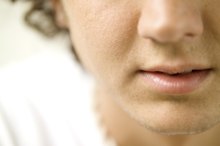What does fact checked mean?
At Healthfully, we strive to deliver objective content that is accurate and up-to-date. Our team periodically reviews articles in order to ensure content quality. The sources cited below consist of evidence from peer-reviewed journals, prominent medical organizations, academic associations, and government data.
- National Institute of Health: National Library of Medicine: Tretinoin Topical
- National Institute of Health: National Library of Medicine: DailyMed: Retin-A Cream, Gel, Liquid
- National Institute of Health: National Library of Medicine: DailyMed: Retin-A Micro Gel
The information contained on this site is for informational purposes only, and should not be used as a substitute for the advice of a professional health care provider. Please check with the appropriate physician regarding health questions and concerns. Although we strive to deliver accurate and up-to-date information, no guarantee to that effect is made.
Strengths of Retin A
The active ingredient in Retin-A and Retin-A Micro is tretinoin, which comes in several strengths. Tretinoin treats acne by promoting peeling of treated areas and unclogging pores, according to the National Library of Medicine 1. The medication is topical, meaning it is applied to your skin through a gel, cream or liquid. It is a prescription medication and should be used with care, under medical supervision, as it can cause skin irritation. It may temporarily increase acne as it is working. Several weeks are required to see results. This medication should not be used if you are pregnant or nursing.
Retin-A Gel
Retin-A Gel comes in two strengths, 0.025 percent tretinoin or 0.01 percent tretinoin. Retin-A in all forms should be applied sparingly, both to reduce skin irritation and because more medicine does not work any better or faster. If you apply too much gel, it will “pill,” which minimizes the likelihood of over-application. Squeeze out a half-inch strip or less onto your fingertip. Dab it over cheeks, forehead and chin, and smooth it in. The gel should become invisible. If it doesn’t, or if dry flaking occurs within a minute, you are using too much.
- Retin-A Gel comes in two strengths, 0.025 percent tretinoin or 0.01 percent tretinoin.
- If it doesn’t, or if dry flaking occurs within a minute, you are using too much.
Retin-A Cream
Retin-A & Pores
Learn More
Retin-A Cream has three strengths of tretinoin: 0.1 percent, 0.05 percent, and 0.025 percent. Like the gel, the cream should become invisible almost immediately after you smooth it into your skin, or you are using too much. Dab and spread, as you do for gel--a half-inch or less of cream squeezed onto your fingertip should be enough. As you use Retin-A, you will get a feel for how much or how little you need to use for your particular skin type.
- Retin-A Cream has three strengths of tretinoin: 0.1 percent, 0.05 percent, and 0.025 percent.
- Like the gel, the cream should become invisible almost immediately after you smooth it into your skin, or you are using too much.
Retin-A Liquid
Retin-A Liquid contains 0.05 percent tretinoin. Apply it to the skin where the acne lesions appear by using your fingertip, a gauze pad or a cotton swab. Be careful not to over-saturate the gauze or cotton so that you don’t get tretinoin in the corners of your mouth, eyes or nose. Any tretinoin should be applied carefully only to affected areas, avoiding delicate areas that may be more susceptible to irritation.
- Retin-A Liquid contains 0.05 percent tretinoin.
- Be careful not to over-saturate the gauze or cotton so that you don’t get tretinoin in the corners of your mouth, eyes or nose.
Retin-A Micro
How to Use Retin-A 0.05
Learn More
Retin-A Micro is also a gel, but delivered through different ingredients than Retin-A Gel. Retin-A Micro comes in strengths of 0.1 percent and 0.04 percent. Studied in a half-face comparison trial in subjects without acne, Retin-A Micro 0.1 percent was less irritating to the skin than tretinoin cream 0.1 percent. The lower irritancy may be due to the inactive ingredients, which deliver the medication, according to manufacturer information. Retin-A Micro may be dispensed from a tube or a pump. Squeeze or pump the medication in the size of a pea to be dabbed onto the skin and smoothed in.
- Retin-A Micro is also a gel, but delivered through different ingredients than Retin-A Gel.
Lowest-Strength Cream
Though tretinoin is an ideal treatment for mild acne, according to San Francisco State University (SFSU), it is irritating to many skin types. The SFSU Student Health Services skin clinic recommends minimizing burning, peeling and redness by beginning with the lowest strength cream, at 0.25 percent tretinoin. Apply the medication on a 3-2-1 schedule--every third night in week one, every other night in week two, and every night in week three--to give your skin time to tolerate the effects.
Related Articles
References
- National Institute of Health: National Library of Medicine: Tretinoin Topical
- National Institute of Health: National Library of Medicine: DailyMed: Retin-A Cream, Gel, Liquid
- National Institute of Health: National Library of Medicine: DailyMed: Retin-A Micro Gel
- Leyden J, Stein-gold L, Weiss J. Why Topical Retinoids Are Mainstay of Therapy for Acne. Dermatol Ther (Heidelb). 2017;7(3):293-304. doi:10.1007/s13555-017-0185-2
- U.S. Food & Drug Administration. Retin-A [labeling]. Updated June 10, 2002.
- Knor T. Flattening of atrophic acne scars by using tretinoin by iontophoresis. Acta Dermatovenerol Croat. 2004;12(2):84-91.
- Davis EC, Callender VD. Postinflammatory hyperpigmentation: a review of the epidemiology, clinical features, and treatment options in skin of color. J Clin Aesthet Dermatol. 2010;3(7):20-31.
- Mukherjee S, Date A, Patravale V, Korting HC, Roeder A, Weindl G. Retinoids in the treatment of skin aging: an overview of clinical efficacy and safety. Clin Interv Aging. 2006;1(4):327-48.
- U.S. Food & Drug Administration. RETIN-A MICRO® [labeling]. Revised January 2014.
- Chen K, White TJ, Juzba M, Chang E. Oral isotretinoin: an analysis of its utilization in a managed care organization. J Manag Care Pharm. 2002;8(4):272-7. doi:10.18553/jmcp.2002.8.4.272
- "Tretinoin Topical." MedlinePlus. 03 April 2000. U.S. National Library of Medicine & National Institutes of Health.
- Kircik LH. "Evaluating tretinoin formulations in the Treatment of Acne." Journal of Drugs in Dermatology. 2014 Apr;13(4):466-70.
- Yeh L, Bonati LM, Silverberg NB. "Topical Retinoids for Acne."Seminars in Cutaneous Medicine and Surgery. 2016 Jun;35(2):50-6.
- Zaenglein AL, Pathy AL, Schlosser BJ, Alikhan A, Baldwin HE, et. al. "Guidelines of Care for the Management of Acne Vulgaris." Journal of the American Academy of Dermatology 74.5 (2016): 945-73.
Writer Bio
Based in Arizona, Kira Jaines writes health/fitness and travel articles, volunteers with Learning Ally and travels throughout the Southwest. She has more than 16 years of experience in transcribing and editing medical reports. Jaines holds a Bachelor of Arts in telecommunications and journalism from Northern Arizona University.









